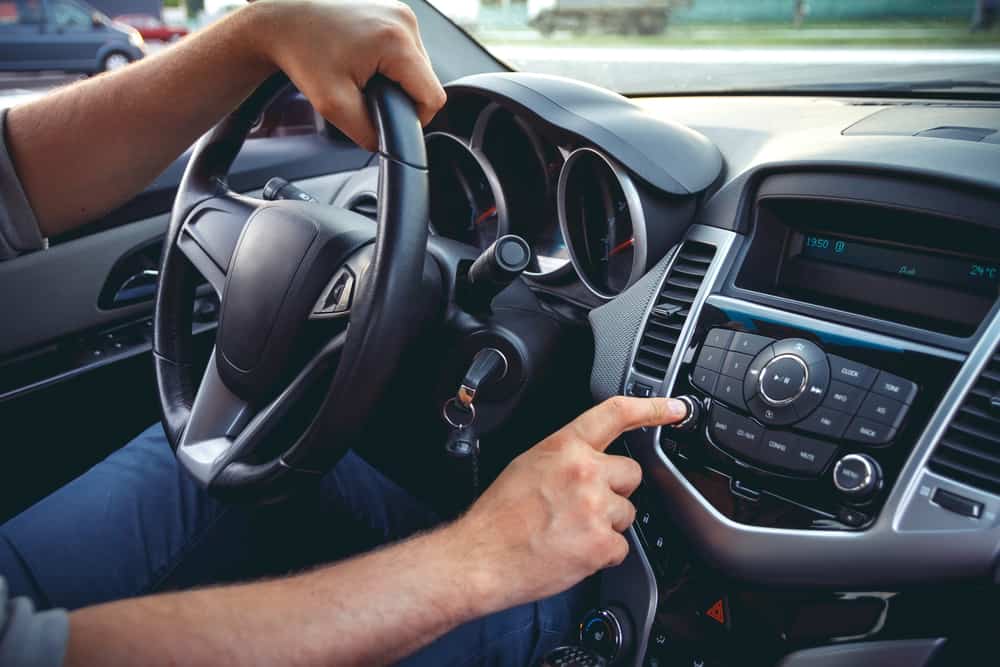Hearing unfamiliar noise from your vehicle can get any driver’s antenna up. That’s because even though you want to get to your destination faster, your safety is your number one priority.
Clicking or knocking noise coming from your dashboard can get any driver worried. These sounds should be investigated so that you can identify the cause and fix it as soon as possible to prevent further damage.
So today, we will be looking at what could be the possible causes of these sounds and how to rectify them.

Causes of Clicking and Knocking Noise Coming from Dashboard and Fix
These knocking or clicking sounds from the dashboard are an indicator that there is something going on with the air conditioning system, the stepper motor, the battery, or the relays.
Also Read:
If your 2005 Jeep Grand Cherokee is making front differential noise, here is how to diagnose and fix the problem.
How to fix Honda Civic clicking noise issue when starting the car
Below are the possible cause of these sounds and how to fix them.
1). Air Conditioning System Issues
Mostly, when you hear sounds coming from your dashboard, it’s typically caused by the air conditioning system in the vehicle.
Though the A/C system has a couple of parts, there aren’t many parts that would click or make a knocking sound. Therefore, the potential culprits are the compressor cycling or blend door.
Compressor Cycle
You may be hearing the compressor in your A/C cycling on and off and causing these sounds. This doesn’t necessarily mean there is a major problem going on with the A/C system.
This might just mean there is a leak somewhere causing a frequency, audible fluctuation.
Blend Door Actuators
The blend door which is also commonly referred to as the vent door function is to mix the cool and warm air together before it passes through the vents.
A clicking or knocking sound is an indication that the air isn’t moving well. It could possibly be that the motor itself has broken down and has stopped working.
Possible Diagnoses of the Problem
Being observant is important in diagnosing the problem properly. Do you want to know when the knocking or clicking sounds start?. Does it start immediately you start the car or when you turn the A/C or heater on?.
Another tip to guide you is Does the air conditioning system actually work?. Do you feel the air coming in as usual or do you feel something not so strong?. Especially on hotter days.
These are all potential clues to guide you in knowing the real problem.
Sometimes, hearing sounds from the dashboard doesn’t necessarily mean there is a major problem. As earlier mentioned, it could just be the normal cycling of the A/C compressor.
However, if you are hearing such sounds it is still a good idea to have the car inspected by a qualified mechanic. If there is an issue with the blend door actuators, then they will be detected by the mechanic and fixed for you.
How to Fix It
These kinds of issues can not easily be fixed by just anyone. Therefore, you will need a professional mechanic who will check the dashboard and know the exact issue.
After that, he can propose the best fix for the vehicle and get the problem addressed. If the issue is with the blend door actuators, then they can be replaced. Also, if it’s a leakage problem, then it can be sealed.
2). Damaged Battery
Sometimes, a faulty battery can be the reason for the clicking noise inside the dashboard. If indeed is the battery that is the problem, then the noise is not exactly coming from the dashboard. But instead, from the engine itself.
It can be caused by the starter since it does not receive enough electricity from the battery to spin the engine.
It will produce a short click when you try to start the car. Also, you will receive a notice on the dashboard lights flicker as well.
This is an indication that you may be having a faulty car battery and a great indicator of where to look for the clicking problem.
How to fix it
To start with, open the engine compartment and inspect the battery thoroughly. There should be no visible signs of corrosion around the terminals.
If you notice zinc sulfate crystals around the negative terminal, then is a sign of an insufficiently charged or drained battery. This substance is in white color.
To test the battery, use a multimeter to check the battery voltage to see if it’s in good condition. Set the meter to DC voltage and it should be able to read up to 20V. With the leads connected to their appropriate terminals.
A healthy battery should read a voltage of around 12.6V. Anything that is below that is an indication of a low or drained battery.
Also, check the car’s alternator and see if it’s charging the battery correctly. A damaged alternator may cause frequent battery drain and even cause electric breakdowns.
3). Broken Stepper Motor
Stepper motors are usually small motors that run on direct current or DC electricity. They can move in very small and precise increments, making them ideal for use inside the instrument dashboard of a car.
The most common use for stepper motors is correctly measuring the engine’s RPMs. They are also implemented inside the car’s odometer to accurately measure miles per hour or kilometers per hour.
Many cars still use analog instrument panels which include the stepper motors as well. One common problem with these motors is that they make a clicking noise because the stepper motor works in steps and each full rotation is made of several steps. If the motor is faulty, it can make irregular clicking sounds.
This is a sign that the motor while rotating is skipping steps and the fast movement is causing the device some damage.
How to fix it
The best thing to do is take your car to a repair shop, specifically a car electrician. They would have to disassemble the entire dashboard behind the steering wheel and reach the malfunctioning stepper motor to solve this problem.
If the problem is minor, they can try to repair the motor, but it would be best to replace the old motor with a new one.
Below is a video explaining how to fix a clicking noise behind the dashboard on your vehicle. Check it out.
4). Defective Relay
Electronic cars are packed with a lot of circuits. control modules, and relays. A car can contain over 20 relays located all over its interior, but the most common locations for these parts are inside the engine compartment or under the car’s dashboard on the driver’s side.
Generally, relays are used to control the function of starter motors, wipers, lights, horns, and all heavy-duty circuits.
If a relay is faulty, it will show another part that is associated with it and create noise such as clicking or rattling sounds that could be an indication that the relay has reached its lifespan.
How to fix it
When you detect a faulty relay, the best fix is to replace it with the new one with the help of your car’s owner’s manual. Luckily, relays are easy to diagnose and replace without any problem. Just find the right location and fix it.
To diagnose the bad relay, simply listen to it. If you hear that clicking sound, remove it and insert the new one; the sounds should disappear.
Final Thoughts
Not every sound you hear is a cause for alarm. But it can also be an indicator that something is wrong or is about to occur. Clicking and knocking sounds can appear at any time on the dashboard. You just need to be performing regular servicing of the vehicle to navigate these issues.
Your car dashboard sounds could also be an indicator that there is a faulty stepper motor, transmission problems, and modulation control heater loss measurement To prevent these problems, you will need to get the vehicle checked regularly.
- How to Chew Quietly While Eating-Effective Tips - April 14, 2023
- Why is My Clutch Pedal Squeaking – Causes & Fixes - April 14, 2023
- Propane Tank Making Hissing Noise (Solved) - February 25, 2023
